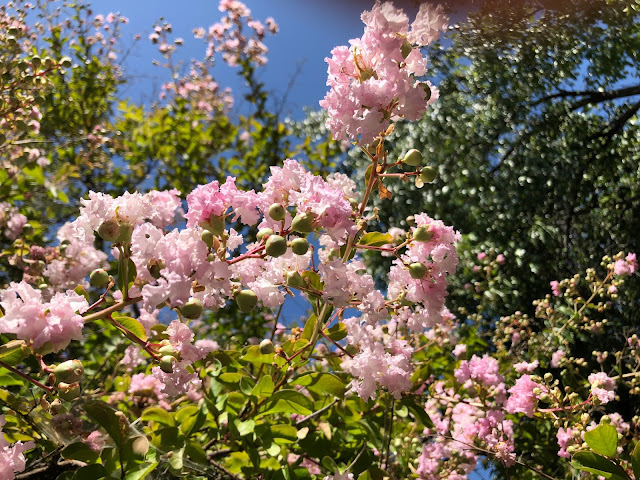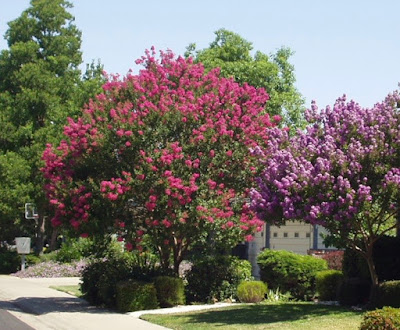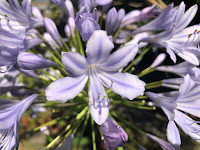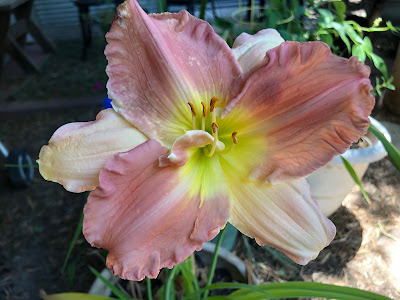

|
|
Crape myrtle trees add color and dappled shade to so many Sacramento-area yards in summer. (Photos, except where noted: Kathy Morrison)
|

|
|
Raspberry and purple crape myrtles brighten this street.
(Photo courtesy Sacramento Tree Foundation) |
|
|
|
|

|
|
Agapanthus blossoms entice pollinators, too.
|

|
|
Daylilies are so gorgeous, worth growing even if the beauty
is fleeting. Below, gazania blossoms are favorites with native bees. Bottom, lantana is popular in my neighborhood, with good reason. |
Comments
0 comments have been posted.Sacramento Digs Gardening to your inbox.
Sites We Like
Garden Checklist for week of July 21
Your garden needs you!
* Keep your vegetable garden watered, mulched and weeded. Water before 8 a.m. to reduce the chance of fungal infection and to conserve moisture.
* Feed vegetable plants bone meal, rock phosphate or other fertilizers high in phosphate to stimulate more blooms and fruiting. (But wait until daily high temperatures drop out of the 100s.)
* Don’t let tomatoes wilt or dry out completely. Give tomatoes a deep watering two to three times a week.
* Harvest vegetables promptly to encourage plants to produce more. Squash especially tends to grow rapidly in hot weather. Keep an eye on zucchini.
* Pinch back chrysanthemums for bushy plants and more flowers in September.
* Remove spent flowers from roses, daylilies and other bloomers as they finish flowering.
* Pinch off blooms from basil so the plant will grow more leaves.
* Cut back lavender after flowering to promote a second bloom.
* It's not too late to add a splash of color. Plant petunias, snapdragons, zinnias and marigolds.
* From seed, plant corn, pumpkins, radishes, winter squash and sunflowers.